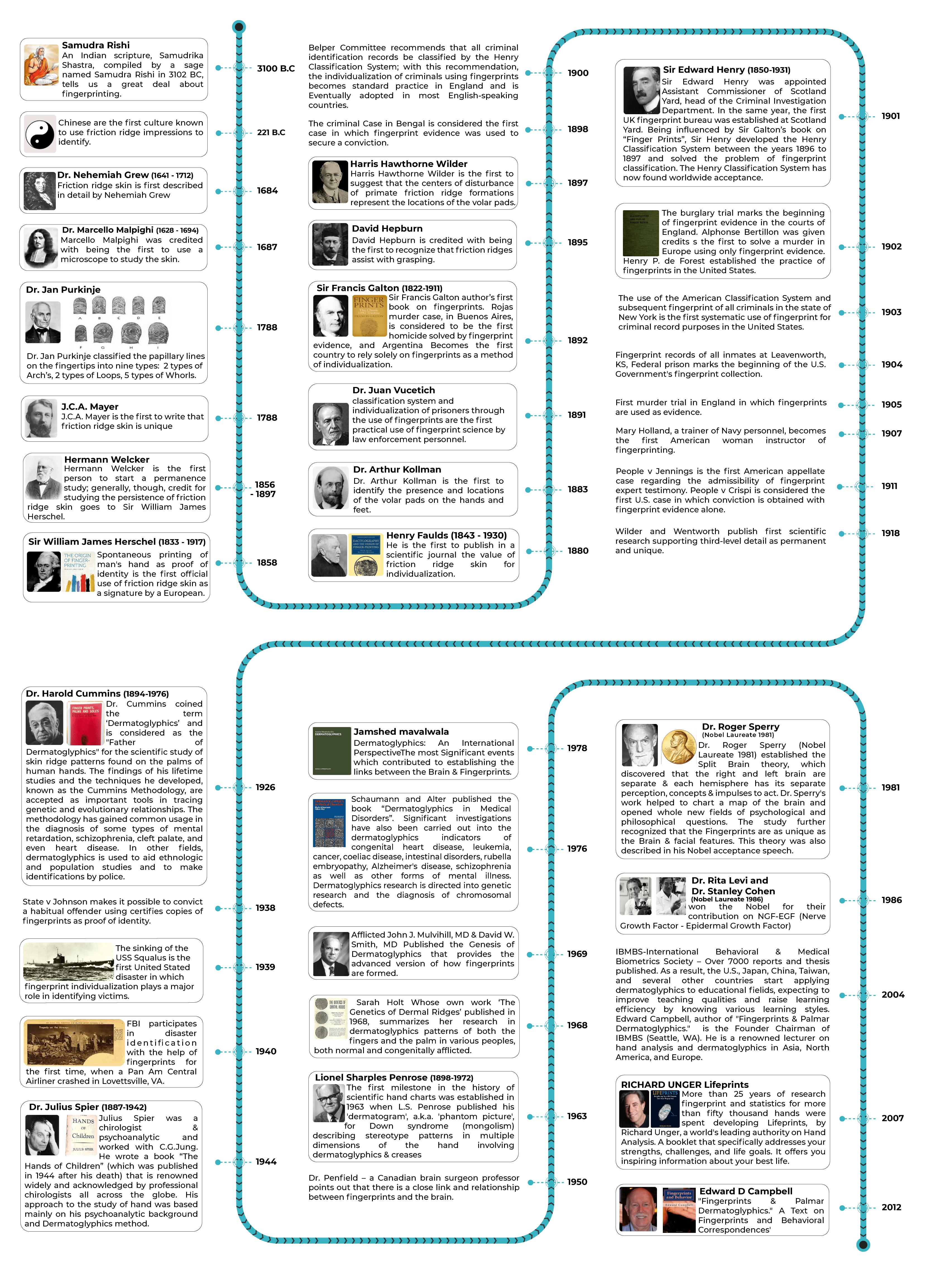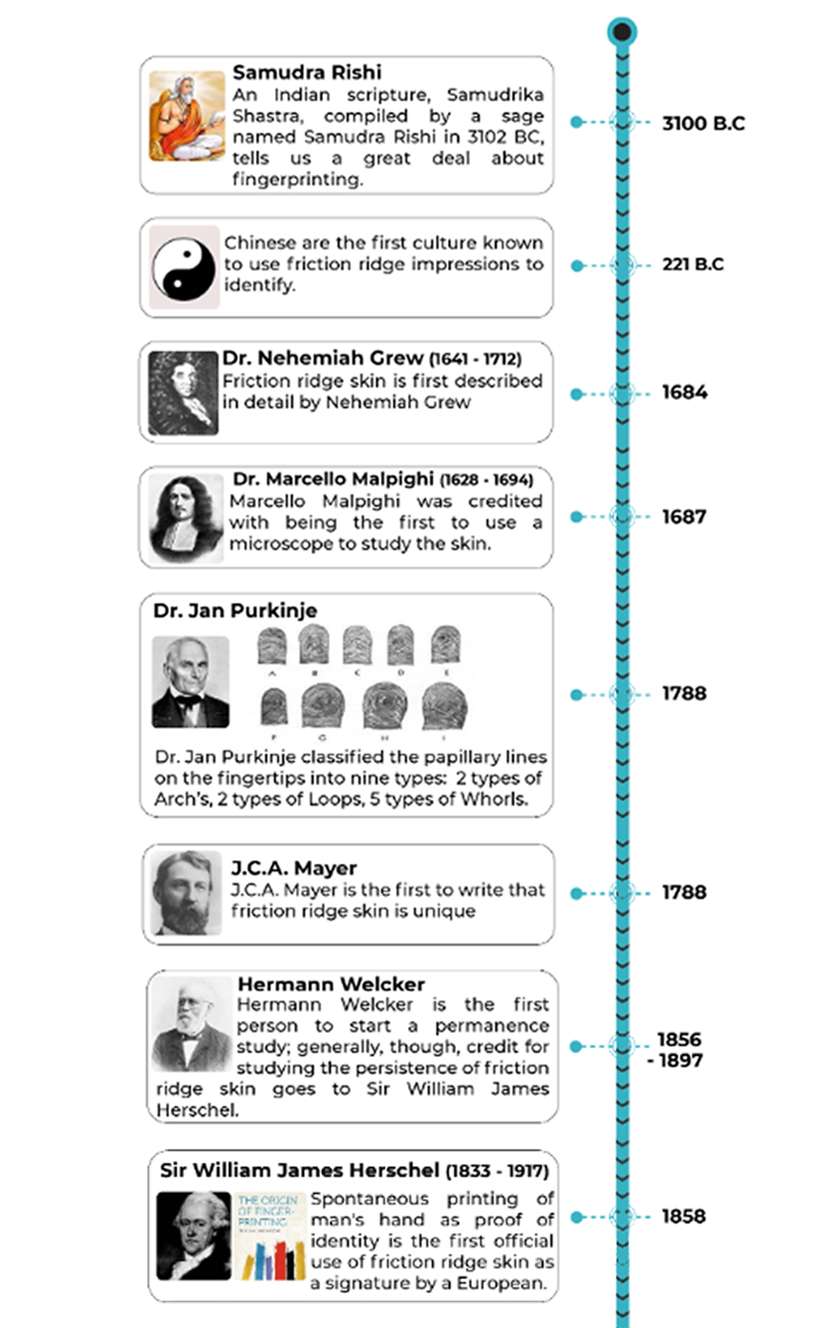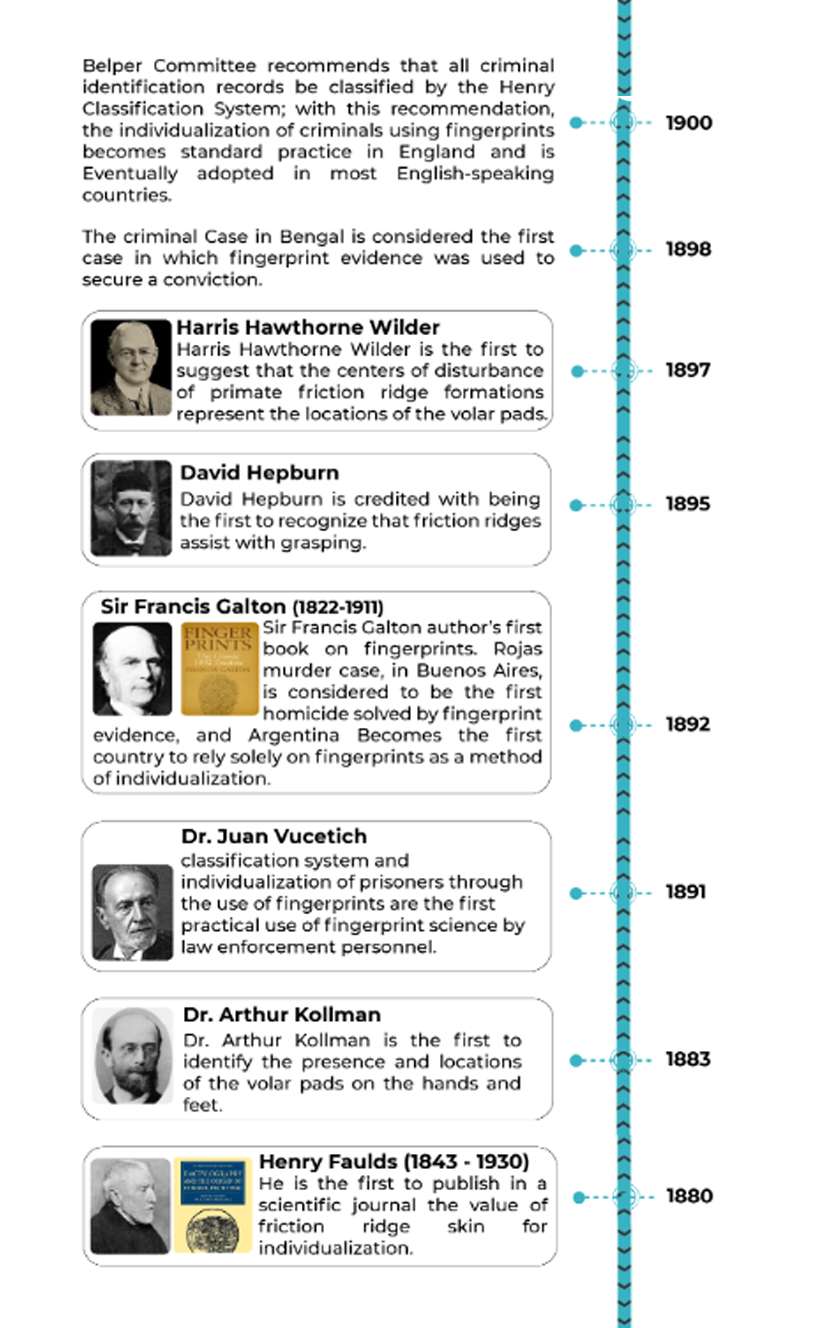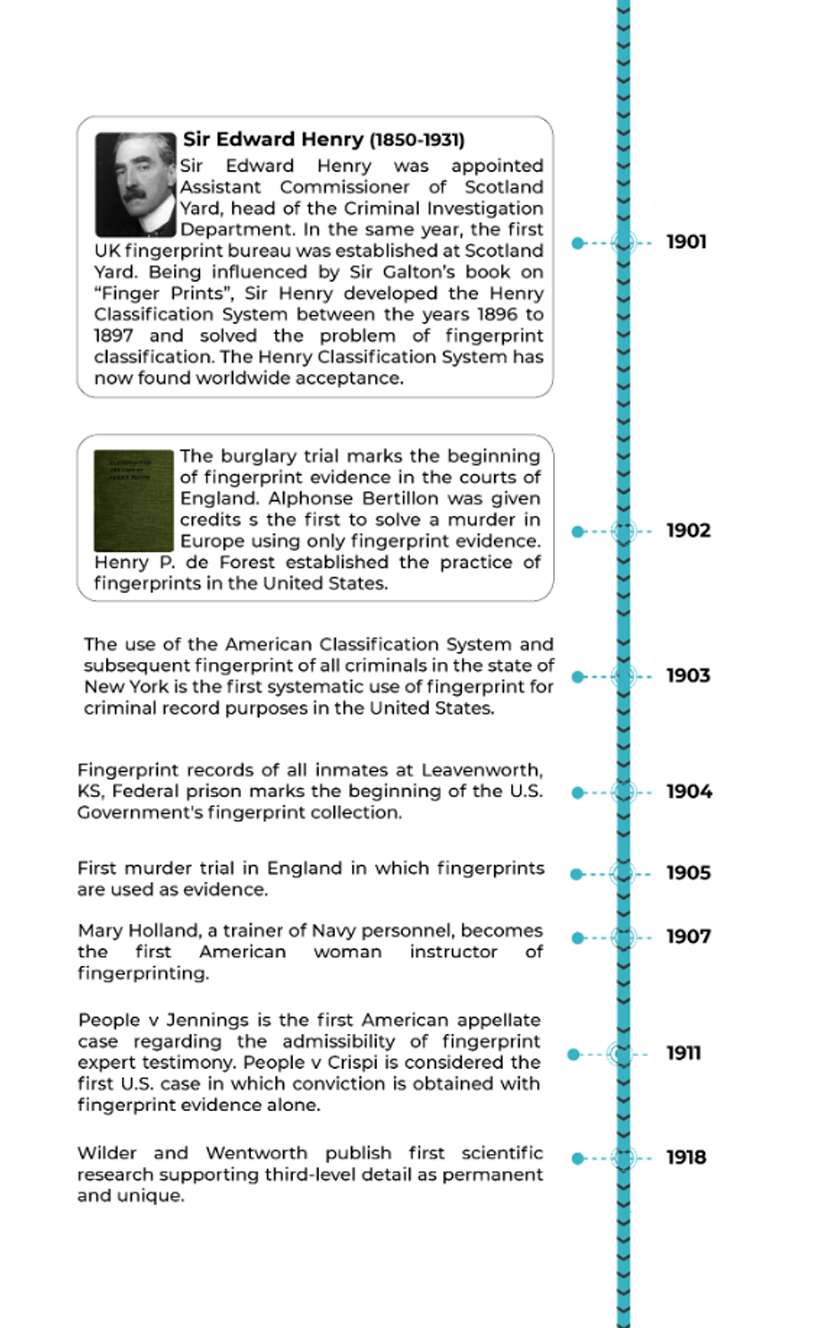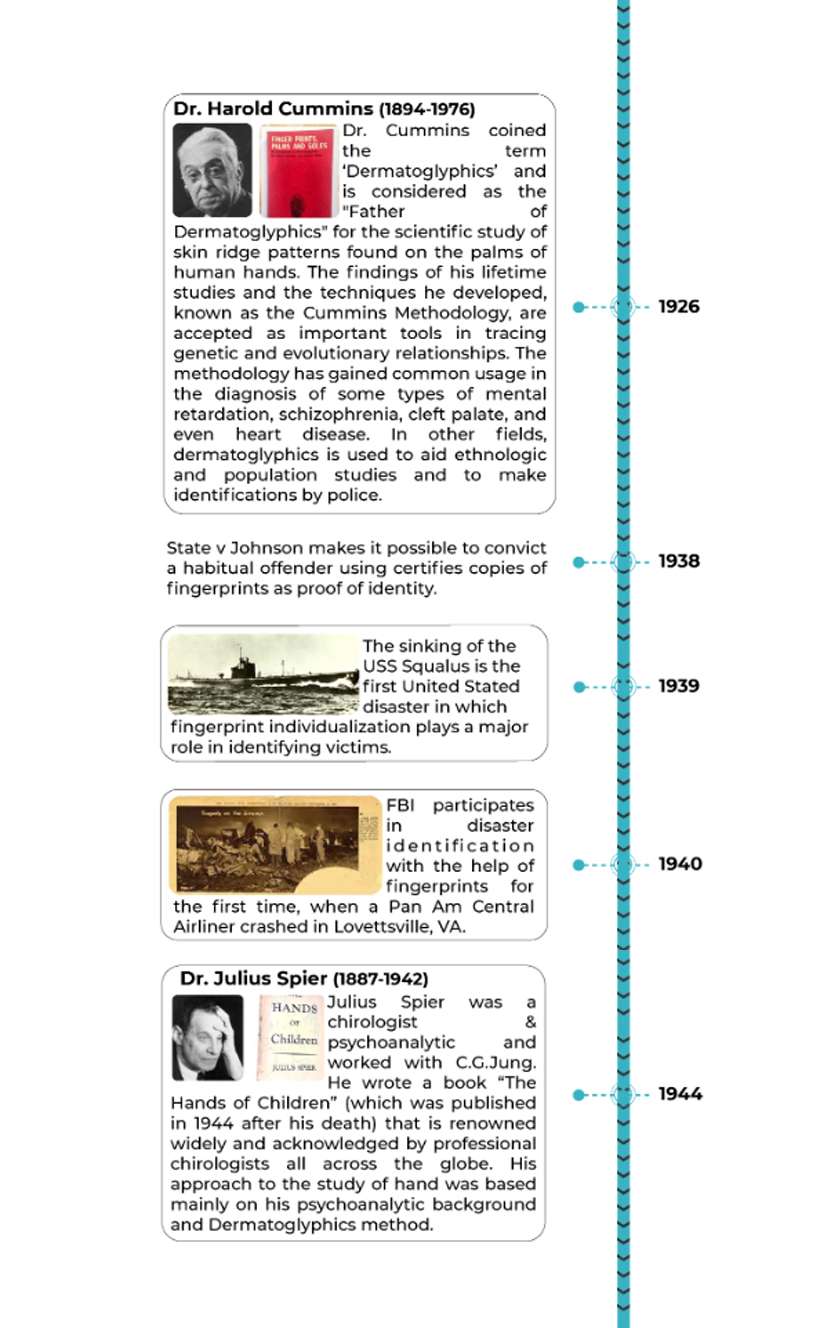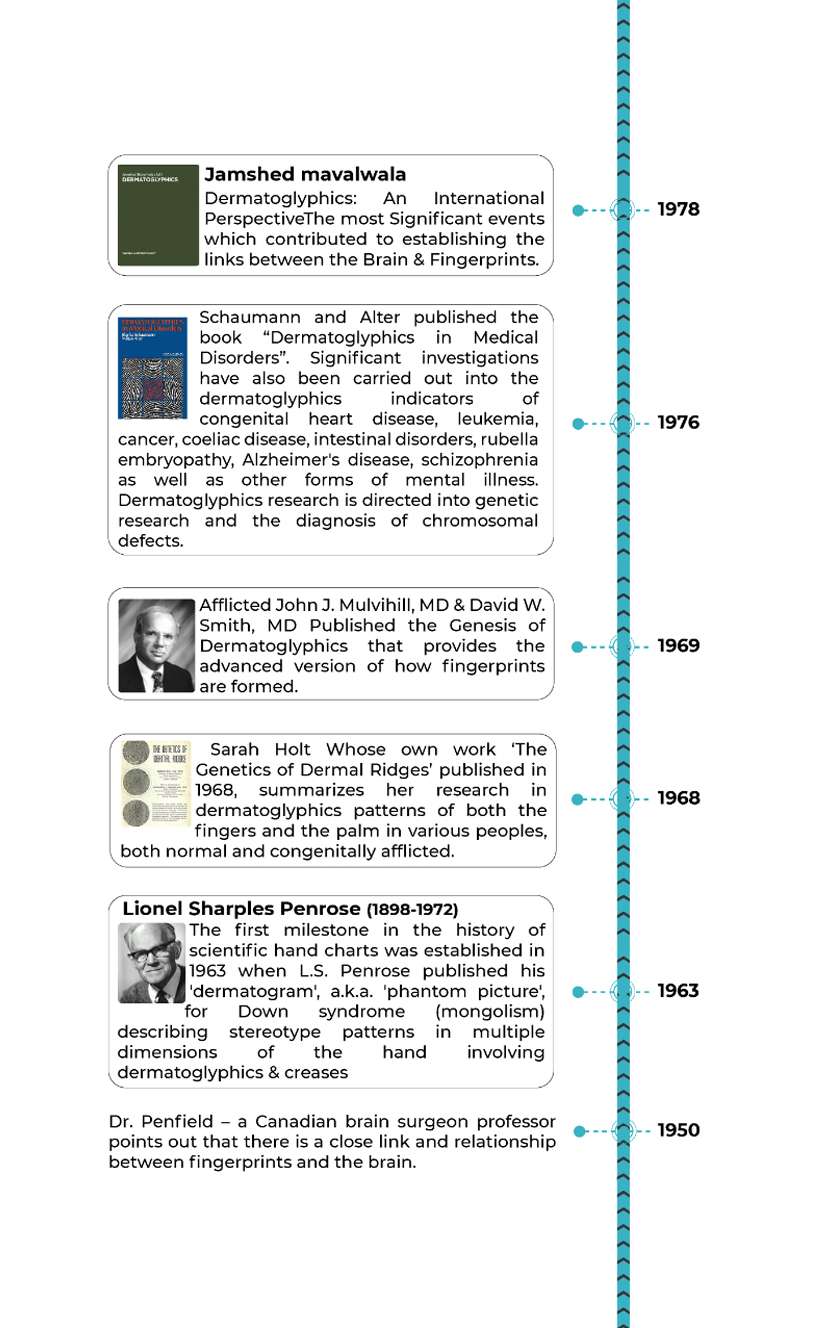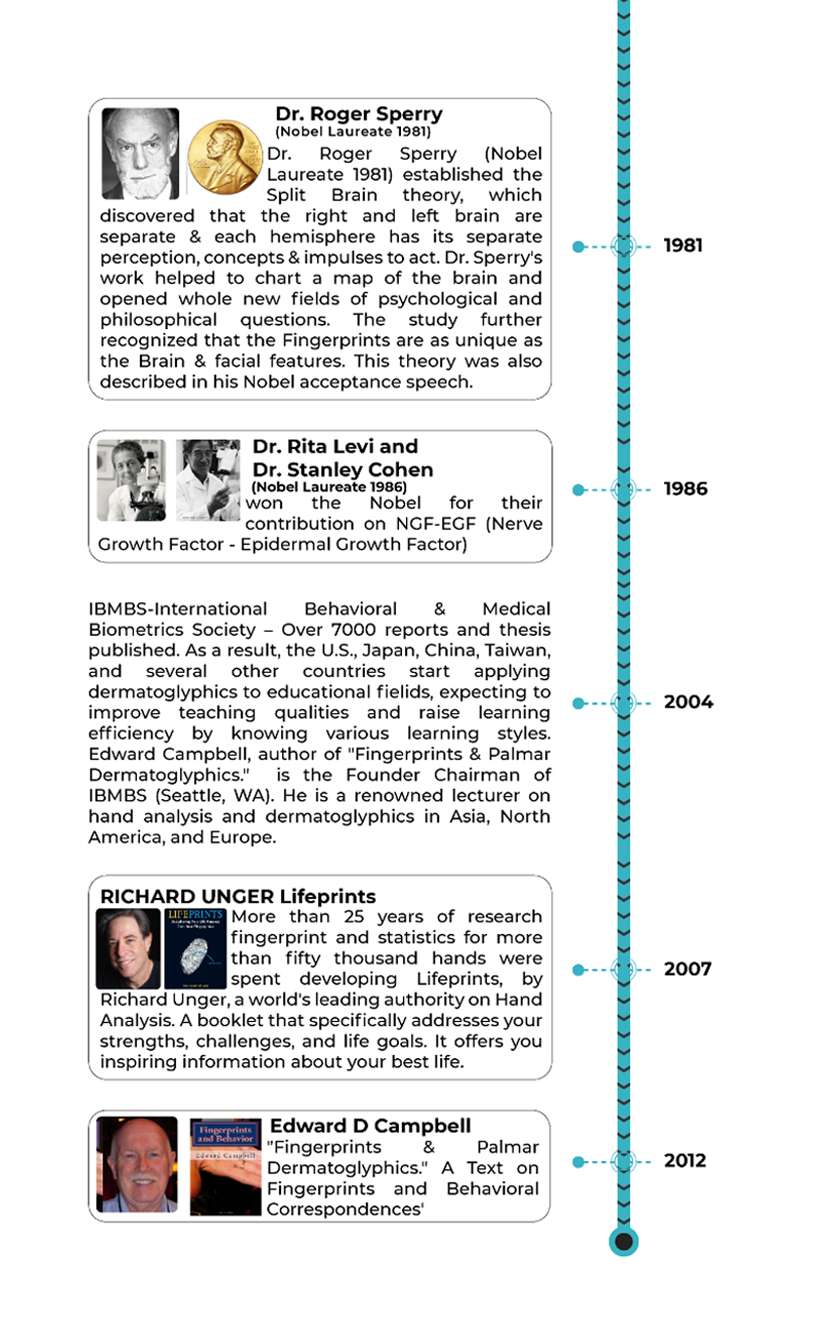It Takes Endless Amount Of History To Make
A Tradition.
The past is malleable and flexible, changing as our recollection interprets and re-explains what has happened.
History of ‘DERMATOGLYPHICS’

Fingerprints are the most infallible means of identification of a person and the science of ‘Dermatoglyphics’ has now proven that the grooves on the fingertips mirror the innate talents that accompany a person right from before they are even born. This science of identifying the true nature of a person based on their fingerprint patterns originated in India. Today, fingerprint individuality is accepted and taken into consideration all over the world, but the Indians knew about the relevance and significance of fingerprinting before any other civilization.
Since the dawn of recorded history, till the present times, Indians have consistently studied and researched this branch of knowledge, traversing from initial speculation, through its development into the most perfect system of character identification. Fingerprinting has remained intertwined with Indian culture since ancient times. An Indian scripture, ‘Samudrika Shastra’, compiled by a sage named Samudra Rishi in 3102 BC, tells us a great deal about fingerprinting.
A) Arches 5 to 10%
(seep)

B) Loops 60 to 65%
(Sankha)

C) Whorls 30 to 35%
(Chakra)

Modern fingerprint examiners broadly classify fingerprints in Three Basic patterns. (A) Arches (B) Loops & (C) Whorls.
Considering the fingers of the entire world population it has been noted that statistically, 5 to 10 % of fingerprints have the Arch pattern, 60 to 65 % are Loops and around 30 to 35 % have whorl patterns. ‘Samudrika Shastra’ too identifies three types of fingerprints. It describes that there are two common types i.e. Sankha (corresponding to Loops), and Chakra (corresponding to Whorls), while the third type, Seep (corresponding to Arches) is rare. It is not surprising that the fingerprint examiners of the modern era and Samudra Rishi of the ancient era reached the same conclusion. The astonishing fact is that what the experts inferred merely one hundred years ago, Samudra Rishi could ratiocinate more than 5000 years ago! There is no written record on the description of fingerprints before ‘Samudrika Shastra’.
AN INTERESTING FACT
The modern science of fingerprinting asserts that parallel ridges on fingertips are interrupted by seven common types of irregularities, known as fingerprint characters or ‘minutiae’. It is relatively easy to discern the outer pattern of a fingerprint with the naked eye, but for locating the ‘minutiae’, one has to use a magnifying glass. Samudra Rishi and his disciples were able to decipher the ridge characters, some with perfection and others with the blemish, without the aid of a magnifier. They must have developed a method to record the finger impressions on a suitable surface. This also means that they would have designed a version of a modern-day stamp pad.
The fingerprint characters or 'minutiae' as per modern science compared to characters as depicted in Samudrika Shastra:
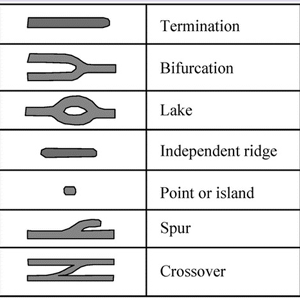
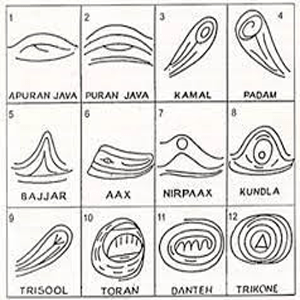
(a) Ridge termination– when the ridge flow abruptly ends.
(b) Bifurcation– when the ridge splits into two, making a ‘Y’.
(c) Lake– The enclosed area in between the ridge.
(d) Independent ridge– Relatively small ridge within a pattern.
(e) Island– A small dot or circle within the overall pattern.
(f) Hook/spur– Small curved ridge is attached to a regular ridge.
(g) Crossover- Two parallel ridges are joined by a small ridge.
APURAN JAVA, PURAN JAVA, PADAM & AAX are concurrent to bifurcation, Lake, Hook & Island respectively, of modern fingerprint discipline. NIRPAAX & KUNDLA are close to Island, while KAMAL is close to the lake. TORAN appears similar to crossover.
about dmit test
What is DMIT?
Dermatoglyphs is the branch of science that studies the strips of skin found on the human fingers, toes, and soles of the feet. It reveals the inherent connections between our fingers and our natural talents and abilities. These patterns arise from the outer ectoderm and usually appear during fetal development. Human fingerprints are thus formed between the 13th and 21st centuries, during development week. With the help of the DMIT test, medical experts and scientists have discovered that the number of brain cells distributed in different parts of the brain helps us understand a person and his multifaceted intelligence, as well as his innate potential abilities and personality.
DMIT Meaning
DMIT (Dermatoglyphics Multiple Intelligence Test) is a fingerprint based biometric analysis. DMIT is useful for all age groups but is especially valuable for parents and teachers when discovering a child’s natural abilities and areas that need improvement. DMIT assessments provide accurate, actionable information and appropriate career recommendations, powered by the information collected only from the child and their biometrics.
DMIT Full Form
DMIT Full Form is a dermatoglyphic multiple intelligence test. Dermatoglyphics is the science of studying skin patterns on the fingertips. It reveals the genetic connections between our fingers and our natural talents and abilities.
Who can do DMIT?
Children and toddlers (1 to 4 years) From birth to about three years of age, the brain stores enormous amounts of associations and groupings.
DMIT analysis has many advantages. Knowing a child’s potential at a young age can help parents make decisions about parenting styles and teaching techniques. The test also talks about the child’s strengths and those areas that need a little more attention.
Children (ages 4-12) Between the ages of three and twelve, the brain begins to prune excess synapses in an attempt to organize and eliminate what is unnecessary.
Advantages of DMIT Analysis:
At this age, children want to learn and can absorb more information than adults. Discovering their learning styles and areas of intelligence at this age can help them decide what courses and activities to pursue.
Young Adults and Adolescents (Ages 12-25) Adolescence is characterized by more severe pruning, when the brain begins to specialize and form an identity.
Benefits of DMIT Analysis: Identifying learning styles at this age helps improve learning. It is also a guide to what courses you can choose. This is also the age where these individuals get a lot more exposure than before, so the parents need to know more than ever about how to deal with and handle them. Considering the age, it also gives a clear picture of what could be done as a career, which ensures a successful career in terms of genetics.
Adult (age 25 and up) Adulthood ushers in a period of pruning, during which certain relationships are reduced and others are strengthened.
Advantages of DMIT Analysis: Understanding one ands areas of intellect can help an adult make career options. Understanding yourself better can help people communicate more effectively and thus create stronger bonds. Employers can also use dermatoglyphic analysis for their employees and positioning strengths and weaknesses.
DMIT Franchise
Brainography DMIT is an educational franchise that helps children unlock their potential and be the best they can be! Brainography DMIT stands for Dermatoglyphics Multiple Intelligence Test (DMIT); it is a US-patented test designed to understand each child’s unique strengths, weaknesses, and learning style. The Brainography DMIT test helps children, individuals, parents, and companies identify careers that are best suited for them. An attractive career is only the tip of the iceberg; There are many other benefits of franchising when you use a DMIT franchise.

